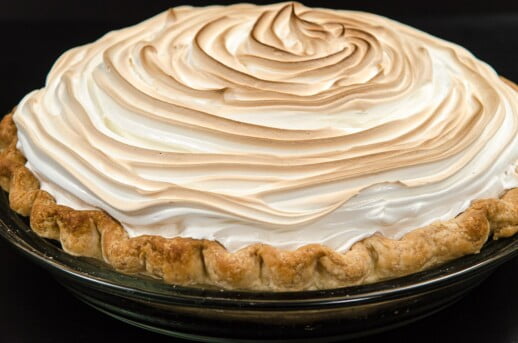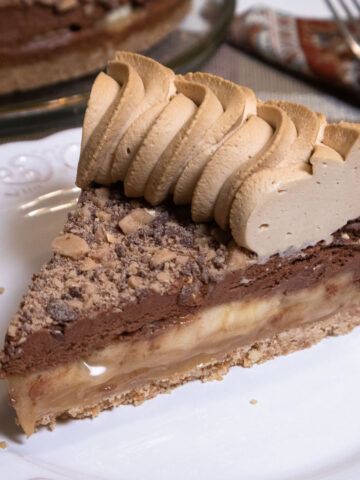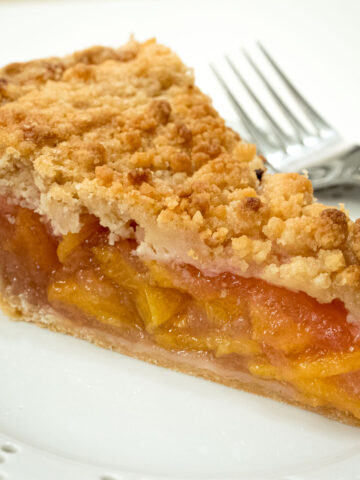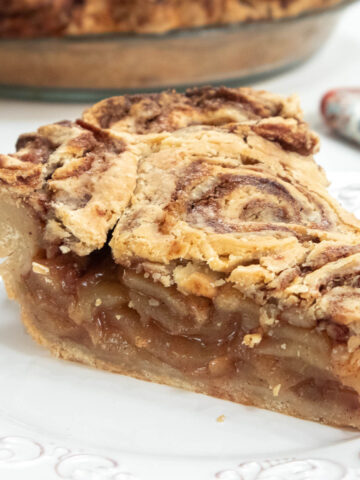
This Updated Lemon Meringue Pie came about as a result of a Meringue class I taught recently on Zoom. Two things stood out. The meringue and how the filling is made. This update addresses both of those to make this easier and foolproof.
Please check out the Lemon Meringue Pie recipe.
The Filling
The is the usual filling for a Lemon Meringue Pie but how it is made can stand some modernization. Typically, the water, sugar, cornstarch, and salt are cooked until very thick. At this point, the yolks are tempered by adding the hot liquid to them three times. Then everything is put back in the pan and brought to a boil for 1 minute.
An easier, faster way is to simply put everything but the butter in the pan at the same time and bring to a boil over medium heat, stirring constantly. Add the butter off heat, whisk in and pour into the baked pie shell. Continue as in the blog.
The Meringue for the Updated Lemon Meringue Pie
Weeping or beading as the sugar beads are known can be a problem with Meringue toppings. The meringue sliding off the filling can be another problem. Both of these are easily solved by adding the how and when the meringue is put on the pie.
Several ingredients will make a difference. Baker's sugar or caster sugar is very finely ground sugar. Using this can make the difference between the sugar dissolving in the egg whites are staying undissolved. The undissolved sugar causes the beading.
The second ingredient that can help, especially if the weather is a bit humid is to add ¼ teaspoon cornstarch per egg white. Mix the cornstarch and sugar together before slowly adding to the egg whites. The sugar should be added a spoonful at a time and then beaten for 15 to 20 seconds before adding another spoonful. This will allow time for the sugar to fully dissolve.
An acid in the form of cream of tartar, lemon juice or white vinegar will help stabalize the egg whites. I prefer the cream of tartar because I don't like adding any liquid to the egg whites. Cream of tartar is added ⅛ teaspoon per egg white.
Our Pie to Try Recommendation: Banoffee Pie
Applying the Meringue to the Pie
Once the meringue is whipped to a stiff peak, how it is applied determines if it will slide off the filling or not.
First of all, many recipes tell you to put the meringue on the hot filling. Don't! The filling does not cook from the bottom on a hot filling because the filling isn't hot enough. That is just hooey! After the filling is added to the crust, press plastic wrap onto the top of the filling and allow it to come to room temperature.
It is most important to make sure the meringue is attached at every point to the inside of the crust. As I mention in the post, this is easiest done with a piping bag but spooning it on is fine as long as it is attached to the crust. This will keep it from slipping off the filling or shrinking back.
Browning the Crust
One of the things that will cause beading or weeping is baking the crust to brown it. Any undissolved sugar will form this little brown beads. I put my Lemon Meringue Pie on a sheet pan on the lowest rung of the oven on hi broil. Within minutes, it is beautifully and evenly browned.












Patricia Aichholz says
I used my usual lemon pie recipe but followed your instructions for cooling the filling to room temp before covering with the meringue. Then i broiled the meringue per your instructions. It turned out beautiful and yummy-no weeping or soggy crust. This was my husband's birthday pie. He was impressed with every piece. Would you suggest using this same method for my other meringue pies? Thank you so much, Helen
Helen S Fletcher says
Hi Patricia, So happy this worked for you. Absolutely, there's no reason not to. Happy Birthday to your husband!
Bonnie Aeschliman says
Loved your instructions. My mother always added the yolks with the other ingredients as you did with beautiful results. I taught a demo class and I
Demonstrated lemon meringue pie. Some of the students told me they followed instructions but their pie looked thick but when they cut it, the filling ran all over the plate. I believe they must have overlooked the filling, causing cornstarch to break down. They did not think that was the problem. Could the meringue been the culprit? They said it looked beautiful, it was the lemon filling. Your thoughts?
Helen S Fletcher says
Hi Bonnie - Did they by any chance freeze the pie? If frozen cornstarch will break down when thawed. I also agree that the filling was either cooked too long and the cornstarch broke down when cooled or they didn't cook it long enough. Cornstarch has to cook at a boil for at least a minute to ensure it will thicken when cold. The meringue couldn't cause the problem because it doesn't interact with the filling. It just sits on top. Of course, it can have problems of it's own. Also, when did they put the meringue on?
Pam says
Thank you again and again for your clear instructions. As soon as my new hip and I are baking again, this is what I'll make
Helen S Fletcher says
Hi Pam - It will be worth the wait. Sending all best wishes for a speedy recovery.
Maria says
Great tips! I have a related question about meringue I haven’t been about to find an answer for. Last June I went to make Swiss meringue icing, but after taking off the heat and whipping up in the KA … it whipped up, but then deflated, turning into a liquidy goo. So I tried again. And again. I tried to make it three times in a row and all three times that happened. (I had to run out and buy a cake last minute.) Was it too humid? I’m on the West Coast so we don’t really do humid much here unless there’s fog, which there wasn’t. It didn’t feel humid, But at the same time it’s not like bakeries can just stop making their Smb cakes if it is. I don’t know what went wrong. I recently with much hesitation made it again with no problem. As I had many times before that three in a row disaster. Do you have any ideas?
Helen S Fletcher says
Hi Maria - I'm not clear on the Swiss Meringue icing. Are you referring to buttercream where you add the butter to the meringue? Or are you using the meringue as the frosting on the cake? Humidity won't collapse it, but it won't whip up as high and can start to soften as it's piped.
Maria says
Yes, but I never got to the part where you add butter, it was still at the meringue only stage. I could get it to whip up some, maybe soft peak at best, but then It quickly collapsed into a runny mess. Far too runny to ever get on a pie. The more I whipped the worse it got. It did this 3x in a row and collapsed each time. I had no idea what to do. I went through 30 eggs (whites). Pretty much my worst kitchen disaster. ♀️
Helen S Fletcher says
My best guess is that the mixture was overheated. Do you know what temperature it was taken to before you removed it from heat? Here is a post I did on Swiss Buttercream with photos. You only need to take the sugar/egg white mixture to 120° to dissolve the sugar. That is the reason for mixing the two. I have seen recipes that take the temperture to 175° and many of the posts online use this number because they are all using the same recipe. I don't. Hope this helps.